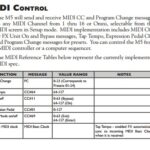The 2013 Volvo XC90, while generally reliable, can experience certain issues. Potential buyers should be aware of these common problems before purchasing. This article will address some frequently asked questions and concerns regarding the 2013 XC90’s reliability and maintenance.
Common Issues and Concerns
Many mechanical components in the 2013 XC90 are shared with models from 2003-2014, excluding engine-specific parts. This commonality makes DIY repairs and maintenance more accessible. A readily available resource for owners is a VIDA dice scanner and software, providing official Volvo repair procedures.
While some owners of German brands like VW and BMW report frequent issues, the 2013 XC90 generally avoids these problems with proper preventative maintenance. Common issues with those brands, such as electrical problems or suspension failures, are less prevalent in the Volvo XC90. Volvo’s longer development cycles likely contribute to this increased reliability. Anecdotal evidence suggests that Volvos are less prone to leaving owners stranded due to unexpected breakdowns.
Specifically for the 2013 and 2014 models, transmission and drivetrain problems are rare, particularly with regular fluid changes for the transmission, differentials, and Haldex system. Although Volvo recommends these services around 100,000 miles, opinions vary on the exact intervals. Many 2013 XC90s with over 100,000 miles continue to operate without significant issues in these areas.
One common question concerns the absence of a backup camera in some 2013 XC90 models. This likely resulted from cost-saving measures. The navigation screen, used for displaying the backup camera video in later models, is somewhat outdated and slow in the 2013 version. However, the parking sensors generally function reliably, and rear visibility is adequate for a vehicle of its size.
Conclusion
The 2013 Volvo XC90 offers a balance of reliability and practicality. While potential issues exist, they are often manageable with preventative maintenance and readily available resources like the VIDA scanner. Understanding the common problems and proactively addressing maintenance needs can contribute to a positive ownership experience.

